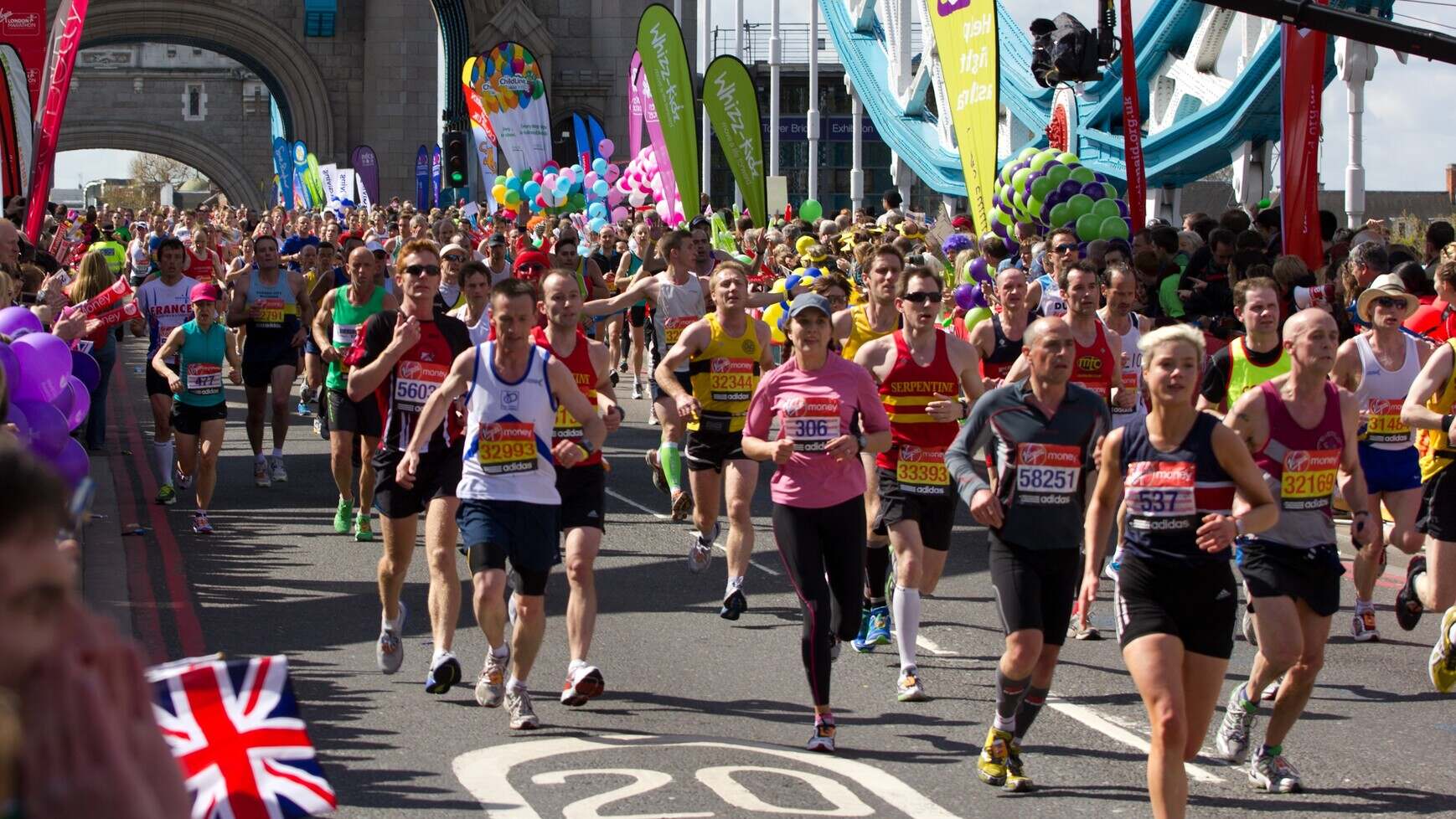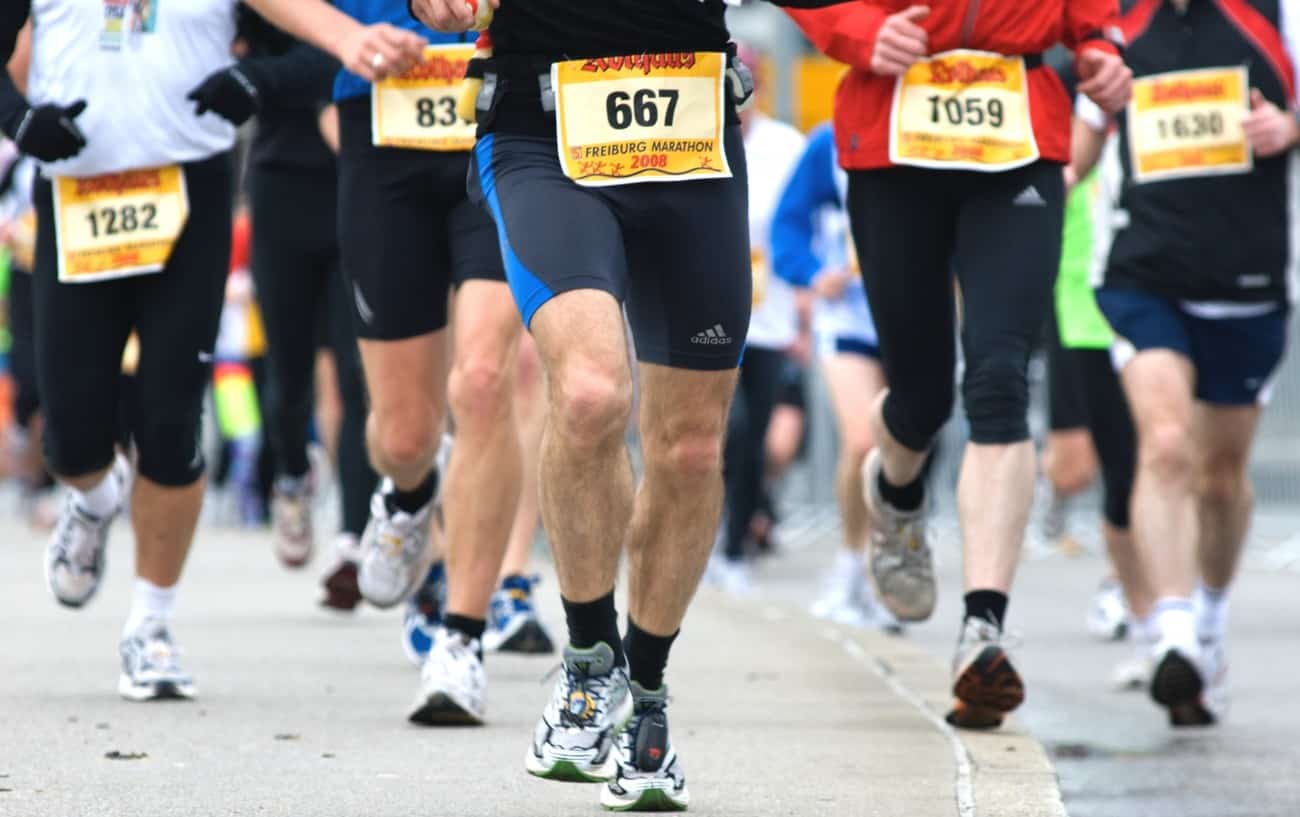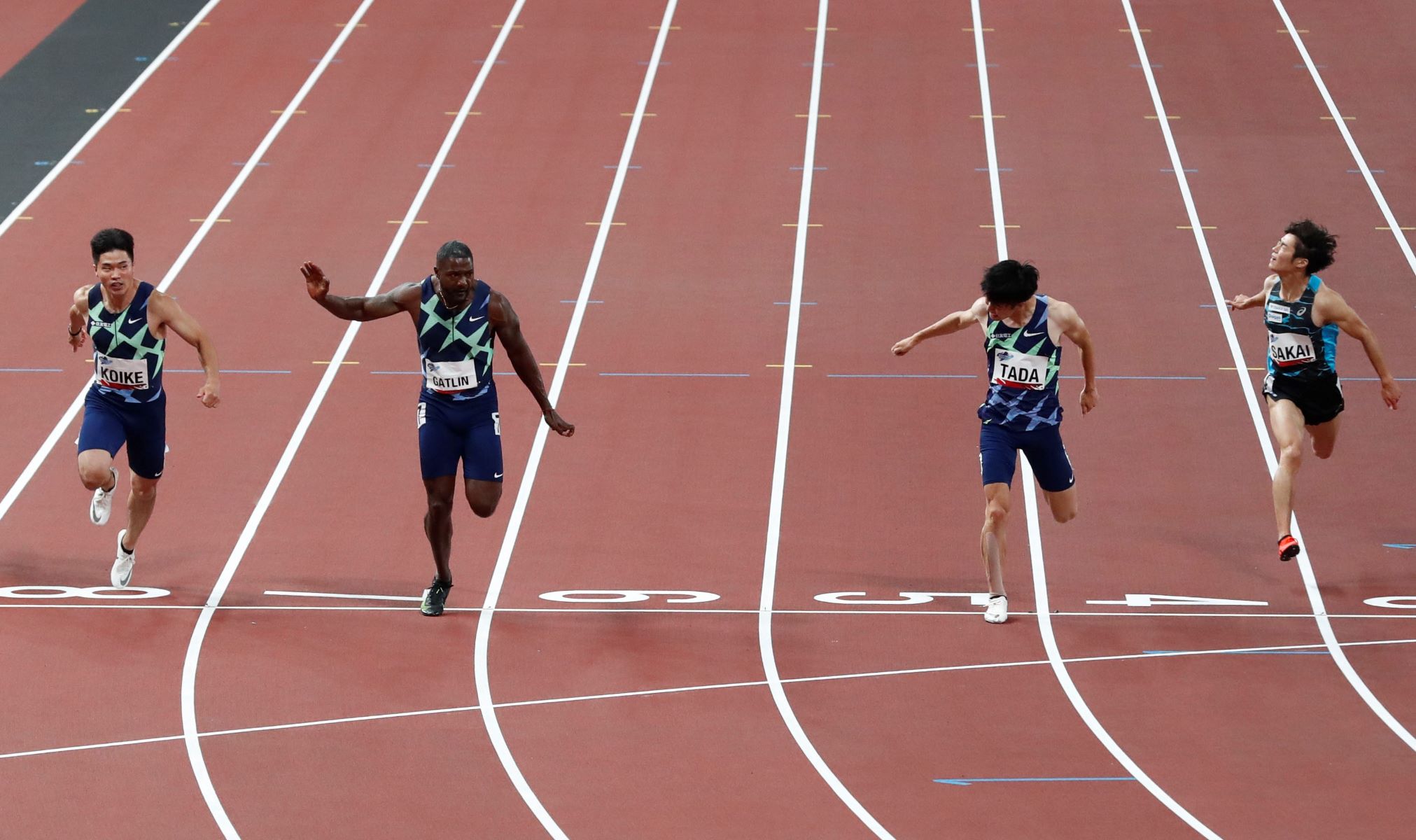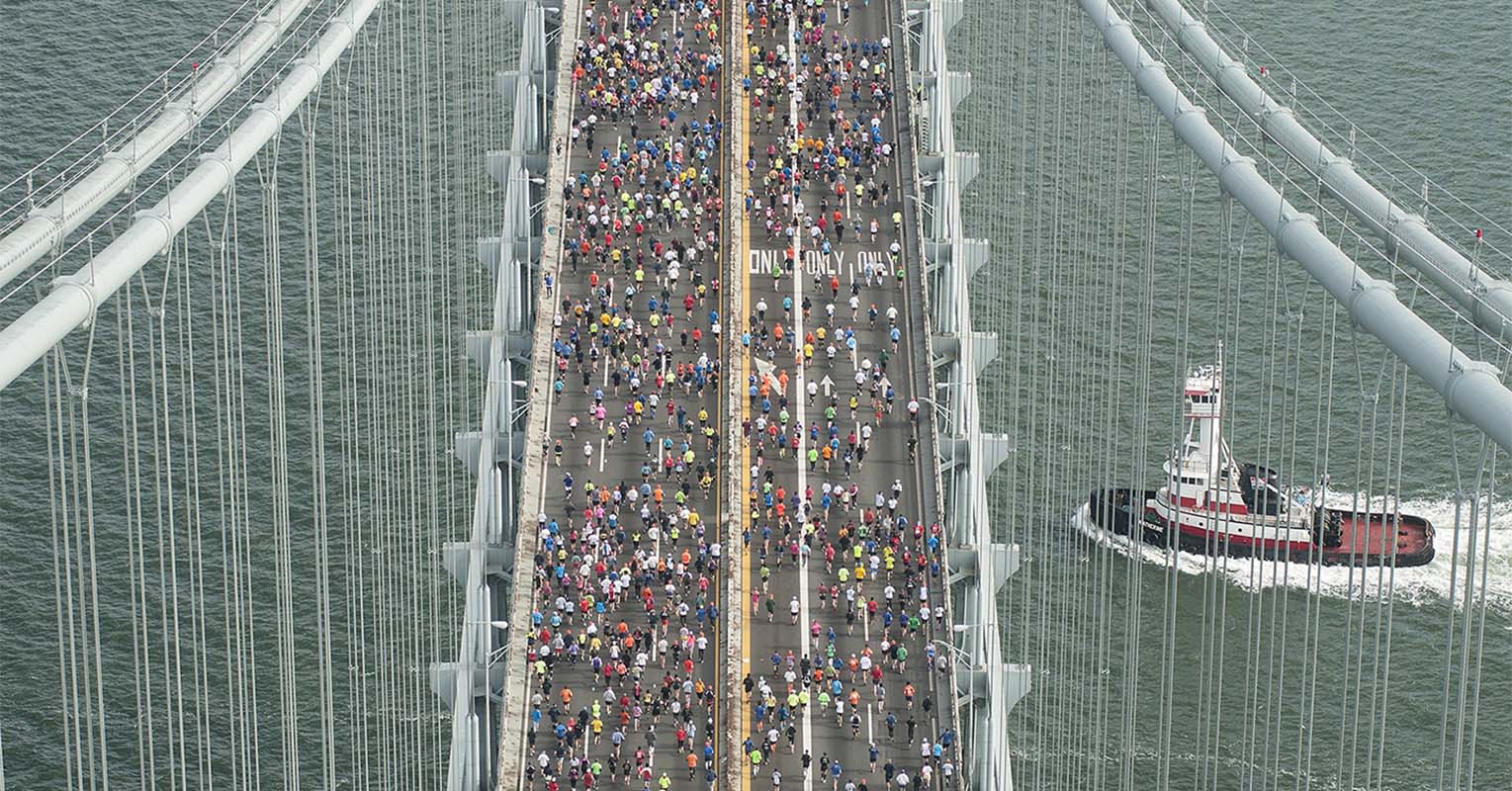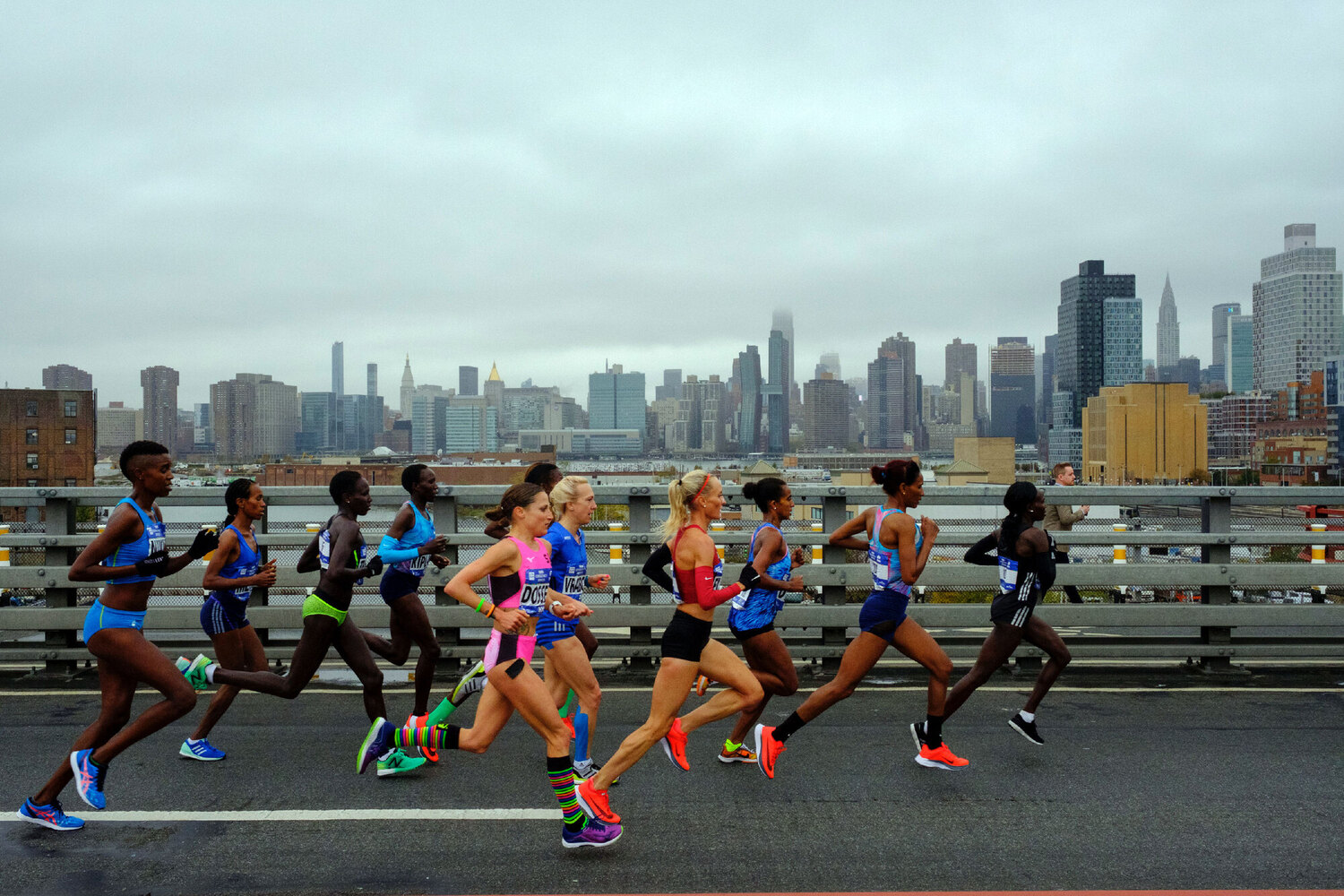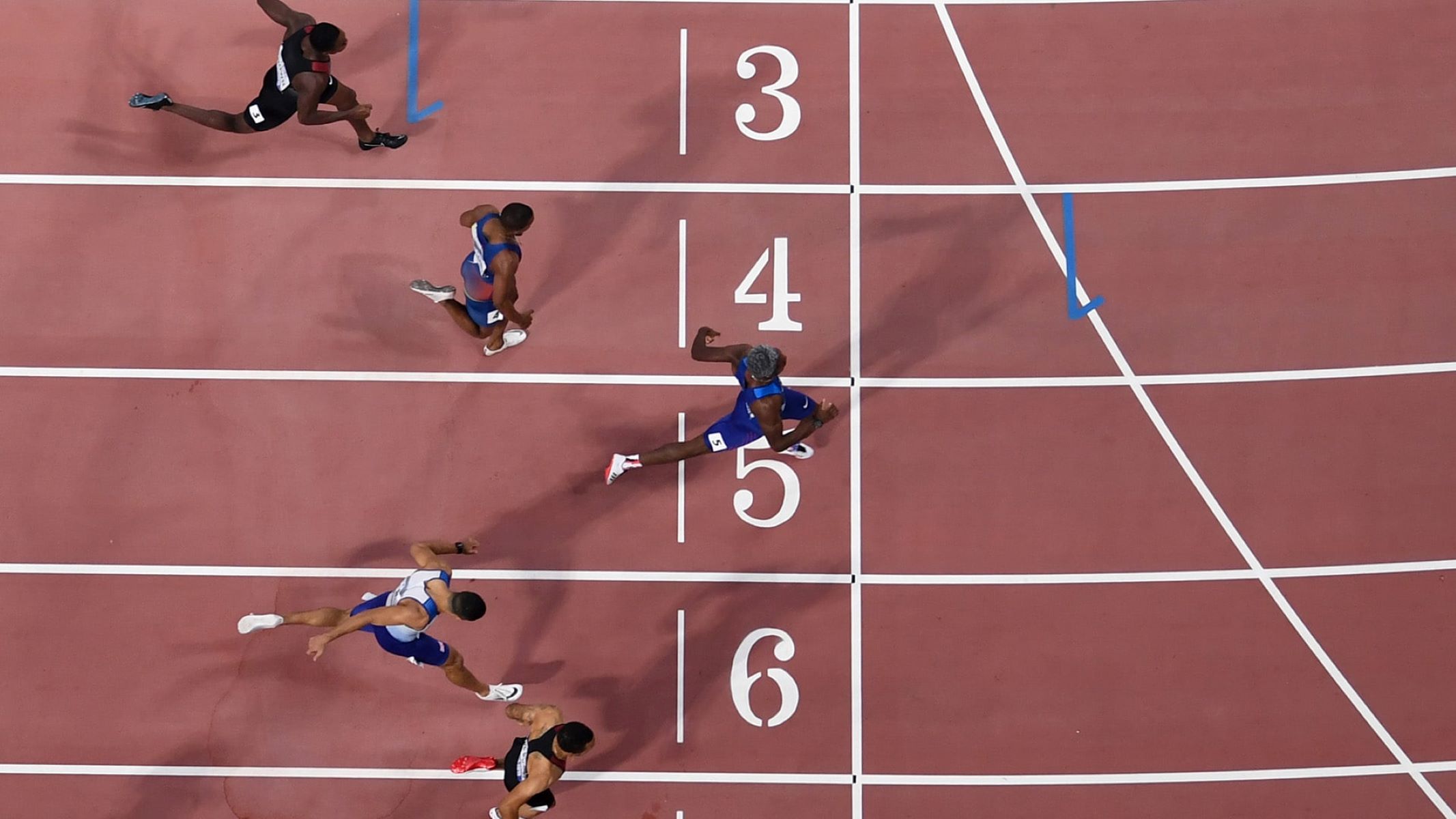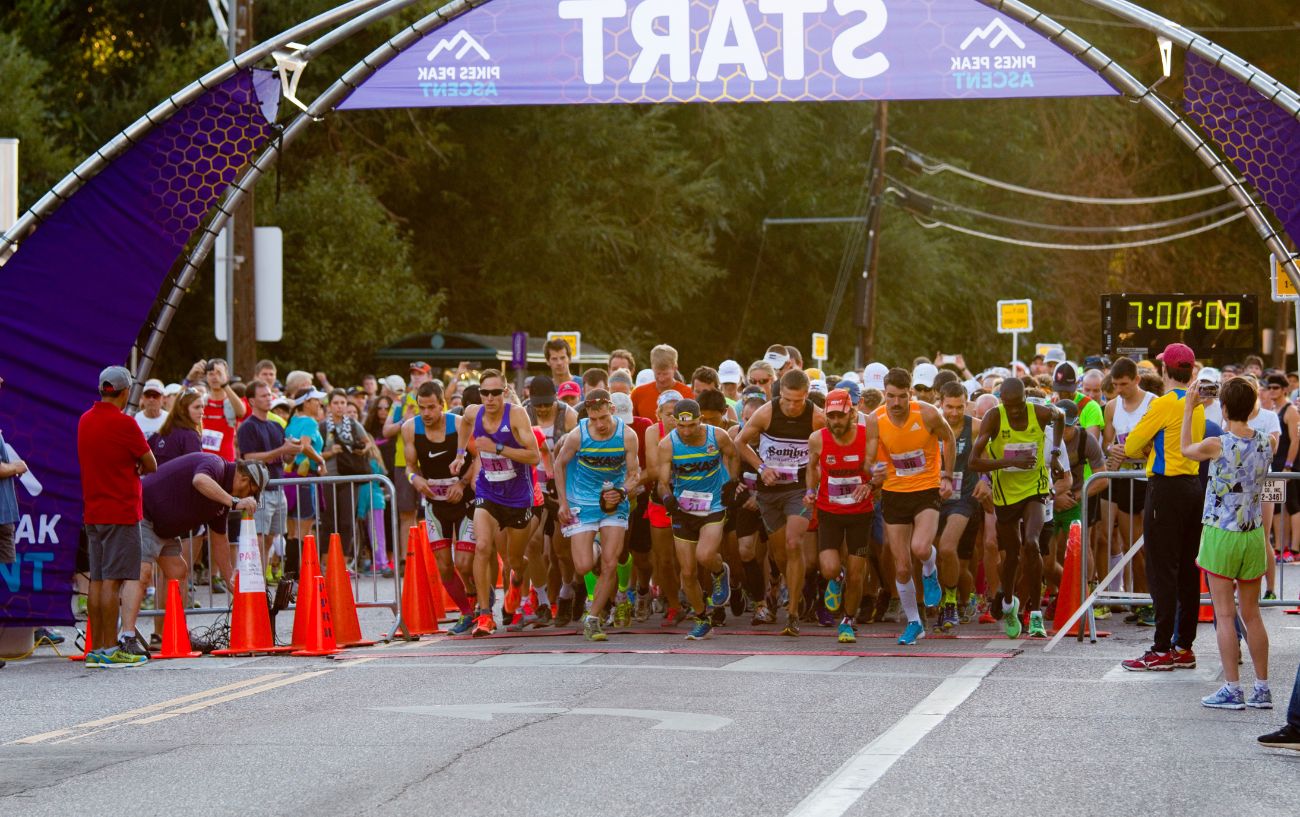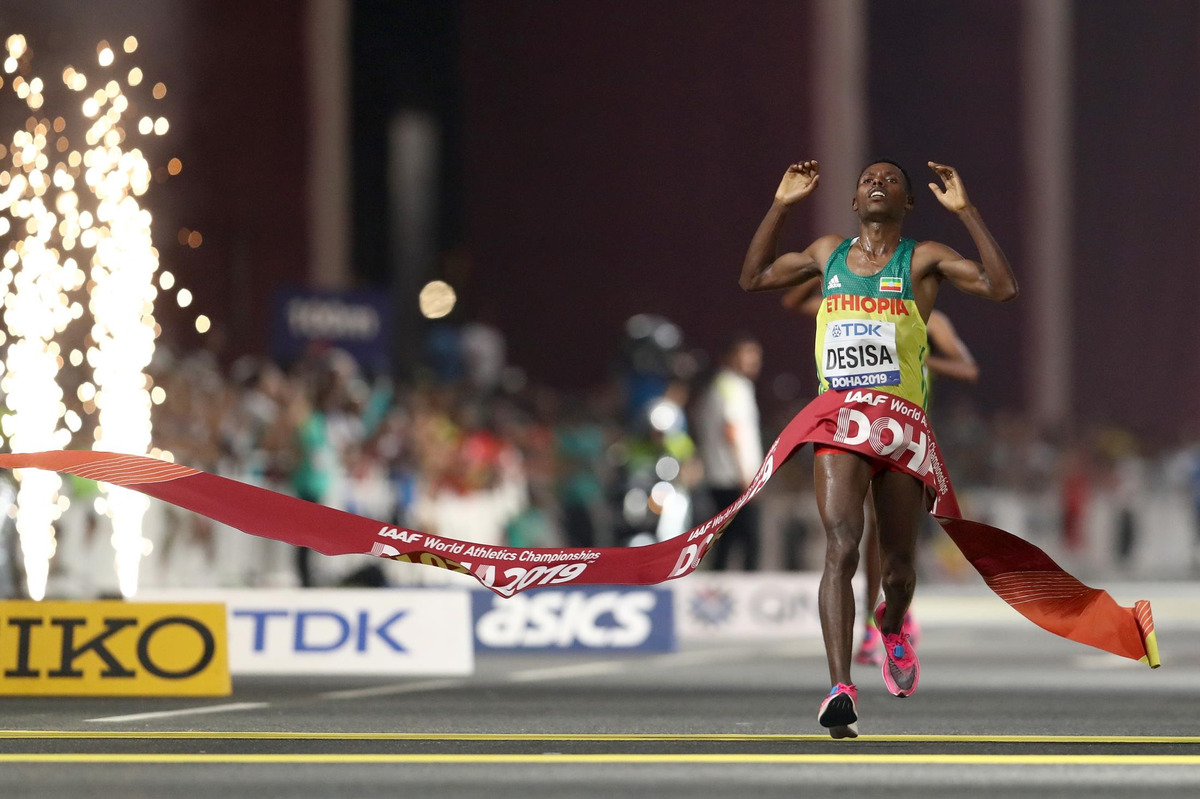

Featured
How Many Meters Is A Marathon
Modified: January 22, 2024
"Find out the exact measurement of a marathon in meters. Read our featured article on how many meters is a marathon and discover the distance of this iconic race."
Introduction
Marathons have become iconic events that test the limits of human endurance. Runners from all over the world take part in these grueling races, pushing themselves to the brink and sometimes even beyond. But have you ever wondered how many meters a marathon actually is?
A marathon is a long-distance race that covers a specific distance. It is one of the most popular and challenging races in the world of running. The word “marathon” itself has an interesting origin. It derives from the legend of Pheidippides, an ancient Greek messenger who ran from the city of Marathon to Athens to deliver important news of the Athenian victory over the Persians. The distance of this historic run, approximately 42 kilometers (or about 26 miles), is now known as a marathon.
The marathon has a rich history that dates back to the ancient Olympics. It wasn’t until the 20th century that the standardized distance of a marathon was established. This standardization was crucial for competition and record-keeping purposes.
Throughout history, the official distance of a marathon has varied. In the early Olympic Games, marathons ranged from just over 40 kilometers to nearly 43 kilometers. However, in 1908, during the London Olympics, the marathon distance was increased to 42.195 kilometers (or 26 miles and 385 yards). This change was made to accommodate the royal family’s request to start the race in front of Windsor Castle, making it the longest marathon in Olympic history.
Today, the distance of a marathon is universally accepted as 42.195 kilometers. This precise measurement allows for fair competition and accurate record-keeping. However, it’s worth noting that there are also variations of marathons, such as ultramarathons, which cover even longer distances.
So, the next time you watch a marathon, whether in person or on television, remember that the runners are covering an impressive distance of 42.195 kilometers. It’s a true display of endurance, strength, and determination. And now that you know the exact length of a marathon, you can better appreciate the incredible feat accomplished by these athletes.
Definition of a Marathon
A marathon is a race, usually held as a road race, that covers a precise distance of 42.195 kilometers (26.2 miles). It is an endurance event that tests the physical and mental capabilities of the participants. The race is typically open to both amateur and professional athletes, with competitors coming from all walks of life and various fitness levels.
The traditional marathon distance can be traced back to the story of Pheidippides, an ancient Greek soldier/messenger who, according to legend, ran from the town of Marathon to Athens to deliver an important message of victory. The distance of this historic run became the benchmark for modern-day marathons.
In recent years, marathons have gained immense popularity. They attract thousands of participants and spectators, making them major sporting events in many cities worldwide. The race starts with a mass start, where all participants run together, usually from a designated starting point to a finish line. Along the route, runners are supported by aid stations that provide water, energy gels, and medical assistance if needed.
Completing a marathon is seen as a significant personal achievement for many runners. Training for a marathon requires months of dedication, discipline, and hard work. It involves following a structured training program that gradually increases the distance and intensity of the runs leading up to the event. The physical demands of a marathon require runners to have a high level of endurance, as well as mental strength to overcome obstacles and stay motivated throughout the race.
Marathons are not only about competition; they often serve as fundraising events for charitable organizations. Many runners participate in marathons to raise awareness and funds for a cause that is close to their hearts. This aspect adds a powerful element of social impact to the race, making it more than just a sporting event.
Over the years, marathons have become iconic symbols of human achievement, showcasing the incredible capabilities of the human body and spirit. The race attracts both elite runners aiming for record-breaking times and recreational runners looking to challenge their own personal limits. Whether you are a competitive runner or a weekend warrior, completing a marathon is something to be proud of, as it represents a remarkable feat of physical and mental endurance.
Historical Background
The origins of the marathon can be traced back to ancient Greece, where the race was not only a sporting event but also held significant cultural and historical importance. The ancient Olympic Games, which started in 776 BC, included a range of athletic competitions, including foot races. The most famous of these foot races was the marathon.
The marathon’s history is closely tied to the legend of Pheidippides. According to ancient Greek lore, in 490 BC, during the Battle of Marathon, the Athenians defeated the invading Persians. Pheidippides, a trained runner, was tasked with delivering the news of the victory to Athens, located approximately 42 kilometers away.
Pheidippides raced from the battlefield in Marathon to Athens, delivering the message, “Rejoice, we conquer!” Upon delivering the news, he collapsed and died from exhaustion. Pheidippides’ legendary run from Marathon to Athens became the inspiration for the modern marathon race.
The first organized marathon race, as we know it today, took place in 1896 during the inaugural modern Olympic Games held in Athens, Greece. The race was included as a nod to the ancient Greek tradition and to honor Pheidippides’ historic run. The route followed the same path from the town of Marathon to the Panathenaic Stadium in Athens.
Initially, the distance of the marathon was not standardized. At the 1908 London Olympics, the race was extended to 42.195 kilometers (26 miles and 385 yards) to allow the race to start in front of Windsor Castle. This distance was then officially adopted as the standard for a marathon.
Since then, marathons have continued to captivate athletes and spectators around the world. The race has been included in various sporting events, such as the Commonwealth Games, Asian Games, and Pan American Games. Additionally, numerous major cities host annual marathons, attracting thousands of participants and worldwide media coverage.
Over time, marathons have evolved from being solely focused on elite athletes to encompassing a wide range of participants. Today, marathons welcome runners of all ages and abilities, promoting inclusivity and a sense of accomplishment for every finisher.
The historical background of the marathon adds depth and significance to the race. It serves as a reminder of the enduring spirit of human determination and the ability to overcome challenges. Whether you are a professional athlete aiming for a podium finish or a recreational runner seeking personal achievement, participating in a marathon connects you to a rich historical legacy that transcends time and continues to inspire millions.
Standard Marathon Distance
The standard distance of a marathon is 42.195 kilometers, which equates to approximately 26.2 miles. This specific distance was established during the 1908 London Olympics and has been universally accepted ever since.
The decision to settle on a set distance for the marathon was not made lightly. At the time, the marathon distance varied between races, making it difficult to compare performances and maintain consistent records. Therefore, the International Association of Athletics Federations (IAAF) sought to establish a recognized length for the marathon to ensure fairness and accuracy in competition.
During the planning of the 1908 London Olympics, the race organizers faced a unique challenge. The original course was measured to be approximately 25 miles from Windsor Castle to the Olympic Stadium in London. However, to accommodate the royal family’s request to start the race in front of the royal nursery at Windsor Castle, an additional 385 yards (approximately 0.22 miles) were added to the course.
This additional distance pushed the total length of the race to 26 miles and 385 yards, or 42.195 kilometers. The course was then adjusted accordingly, and the new distance became the standard for the marathon.
Since that time, the standard marathon distance has been adopted by numerous race organizations and governing bodies worldwide. It has become the benchmark for marathon runners, with the goal of completing the 42.195-kilometer distance serving as a significant achievement in the running community.
The standard distance is not only used for competitive marathons but also for official record-keeping purposes. Various world records and world-record progressions are recognized for both men and women based on performances in races adhering to the standard distance.
It’s important to note that while the marathon distance is standardized, variations do exist. Some marathons may have slightly deviated courses due to logistical constraints or unique race routes. These variations, however, are typically minimal and do not deviate significantly from the standard distance.
Overall, the standard marathon distance of 42.195 kilometers showcases the true test of endurance, pushing runners to their limits as they strive to complete the challenging distance. It has become a mark of accomplishment for countless athletes, symbolizing the dedication, perseverance, and unwavering spirit required to conquer the marathon’s grueling course.
Conversion Factors
While the standard distance of a marathon is universally recognized as 42.195 kilometers, it can be helpful to understand the conversion factors for those who are more familiar with other units of measurement, such as miles or meters.
Here are some commonly used conversion factors for marathon distance:
- 1 marathon = 42.195 kilometers
- 1 marathon = 26.2 miles
- 1 marathon = 26 miles + 385 yards
Converting a marathon distance into miles is a straightforward process. By multiplying the distance in kilometers by a conversion factor of 0.6214, you can obtain the equivalent distance in miles.
For example, if we have a marathon distance of 42.195 kilometers:
42.195 km * 0.6214 = 26.21875 miles
Therefore, a standard marathon is approximately 26.2 miles.
On the other hand, converting a marathon distance into meters requires multiplying the distance in kilometers by 1,000. So, using the same example:
42.195 km * 1,000 = 42,195 meters
Thus, a standard marathon is approximately 42,195 meters.
These conversion factors can be useful for runners who are accustomed to thinking in different units or for those who want to compare marathon distances with other races or events.
It’s important to note that variations may exist in races due to course design, measurement accuracy, or rounding. Therefore, it’s always advisable to refer to the official distance provided by race organizers to ensure accuracy when converting distances.
Understanding the conversion factors for marathon distances allows for convenient comparisons and a better grasp of the challenges and accomplishments associated with this iconic race. Whether you prefer to think in kilometers, miles, or meters, these conversion factors provide a common language for discussing and appreciating the achievements of marathon runners worldwide.
Marathon Distance in Meters
The marathon is a race that covers a distance of 42.195 kilometers, but for those who prefer to think in meters, this length can sometimes seem daunting or difficult to visualize. Understanding the marathon distance in meters can help provide a clearer perspective on the scale of the race.
Converting the standard marathon distance from kilometers to meters is relatively straightforward. Since there are 1,000 meters in a kilometer, we can simply multiply the distance in kilometers by 1,000 to obtain the equivalent distance in meters.
Using the standard marathon distance of 42.195 kilometers as an example:
42.195 km * 1,000 = 42,195 meters
Therefore, a marathon is approximately 42,195 meters in length.
To put this into perspective, 42,195 meters is equivalent to approximately 26.2 miles or 138,435 feet. Visualizing the marathon distance in meters can help runners better understand the scale of the race and appreciate the incredible physical and mental endurance required to complete it.
Throughout the course of a marathon, runners will take thousands of steps and cover a vast expanse in meters. Each meter conquered brings them closer to the finish line, showcasing their dedication, resilience, and determination to overcome the challenges along the way.
Understanding the marathon distance in meters can also help in planning and strategizing during training. Runners can break down their training runs into specific distances in meters, whether they are focusing on speed intervals, tempo runs, or long endurance runs. This kind of quantification can help set goals, track progress, and monitor performance.
Furthermore, knowing the marathon distance in meters can facilitate comparisons with other races or events that use the metric system. It allows for a common understanding when discussing running achievements and distances globally.
So, the next time you think about a marathon, visualize the 42,195 meters that await the runners. It’s an impressive and challenging distance that tests the limits of human endurance, showcasing the strength and determination of athletes all around the world.
Records and World-Record Progression
The marathon distance has been the setting for numerous records and remarkable athletic achievements. From breaking the elusive two-hour barrier to setting new world records, the marathon has captured the attention and imagination of runners and spectators alike.
It’s important to note that there are separate world records for men and women, which recognize the fastest marathon times in history. The records are approved and maintained by the International Association of Athletics Federations (IAAF) and the Association of Road Racing Statisticians (ARRS).
The men’s current world record for the marathon is held by Eliud Kipchoge of Kenya, who completed the race in an astounding time of 2 hours, 1 minute, and 39 seconds. Kipchoge achieved this incredible feat on September 16, 2018, at the Berlin Marathon. His record-breaking performance shattered the previous record set by Dennis Kimetto in 2014, solidifying Kipchoge’s status as one of the greatest marathon runners of all time.
On the women’s side, the current world record is held by Brigid Kosgei of Kenya. Kosgei set a remarkable time of 2 hours, 14 minutes, and 4 seconds at the 2019 Chicago Marathon, surpassing the previous record set by Paula Radcliffe in 2003. Kosgei’s impressive performance showcased the immense talent and determination of female marathon runners.
The progression of the marathon world records has seen gradual improvements over the years as athletes continue to push the boundaries of what was once considered impossible. Factors such as advances in training techniques, nutrition, and equipment have played a role in the steady progression of world records.
In addition to the overall world records, there are also age-group world records that recognize exceptional performances by runners in specific age categories. These records provide recognition and motivation for runners of all ages to excel in their respective age divisions.
It’s worth mentioning that the quest to break the sub-two-hour barrier, once thought to be insurmountable, has garnered significant attention in recent years. While Eliud Kipchoge’s historic performance in 2019 came close, with a time of 1 hour, 59 minutes, and 40 seconds under controlled conditions, it did not qualify as an official world record due to various factors, including the use of rotating pacemakers and the non-compliance with certain IAAF rules.
Despite not officially breaking the two-hour mark, Kipchoge’s achievement showcased the immense potential for human performance and ignited a renewed belief in the possibility of achieving this remarkable feat in the future.
Looking forward, the marathon world records will likely continue to be challenged and broken as athletes strive for faster and more efficient performances. The courage, dedication, and resilience displayed by these elite runners serve as inspiration for all, reminding us that with hard work and unwavering determination, extraordinary accomplishments can be achieved on the marathon course.
Notable Marathon Races
Marathon races take place all around the world, each with its own unique characteristics and challenges. These races attract a diverse range of participants, from elite athletes aiming to break records to recreational runners seeking personal achievements. Let’s explore some of the most notable marathon races that have captivated the running community:
1. Boston Marathon: The Boston Marathon is one of the oldest and most prestigious marathons in the world. Held annually on Patriots’ Day in April, it attracts both amateur and professional runners from around the globe. The course is known for its challenging terrain, including the notorious Heartbreak Hill, and the iconic finish line on Boylston Street in downtown Boston.
2. New York City Marathon: The New York City Marathon is one of the largest and most popular marathons, with over 50,000 participants. This race takes runners through the five boroughs of New York City, offering a unique and vibrant experience. The race culminates in an exhilarating finish in Central Park, with spectators lining the streets to cheer on the runners.
3. London Marathon: The London Marathon is known for its rich history and fast course, attracting top international athletes. Runners start at Greenwich Park and pass iconic landmarks like Tower Bridge and Buckingham Palace. This race is also famous for its passionate crowds and festive atmosphere.
4. Berlin Marathon: The Berlin Marathon is renowned for being a fast and flat course, making it popular among elite runners aiming for personal bests or world records. It is where Eliud Kipchoge set the men’s world record in 2018. The scenic route takes participants through the vibrant city of Berlin, passing key landmarks such as the Brandenburg Gate.
5. Tokyo Marathon: The Tokyo Marathon is held annually and showcases the fusion of traditional and modern aspects of Tokyo. The race takes participants through both historic and contemporary sections of the city, providing a unique cultural experience. Despite being a challenging course, it is highly regarded for its exceptional organization and enthusiastic support from spectators.
6. Chicago Marathon: Known for its flat and fast course, the Chicago Marathon attracts thousands of runners seeking to achieve personal bests. The race takes participants through the diverse neighborhoods of Chicago, offering a vibrant and energetic atmosphere. The course also provides several iconic landmarks, including Grant Park and Lake Michigan.
7. Marine Corps Marathon: As one of the largest marathons in the United States, the Marine Corps Marathon holds a special significance for its patriotic spirit. Known as “The People’s Marathon,” it takes place in Washington, D.C., offering scenic views of the nation’s capital and passing landmarks such as the Pentagon and the National Mall.
These are just a few examples of the many notable marathon races held worldwide. Each race offers its own unique challenges, scenery, and atmosphere, while showcasing the incredible accomplishments and stories of the runners who participate. Whether you’re an elite athlete or a recreational runner, these races provide an opportunity to test your limits, experience the spirit of camaraderie, and create lasting memories.
Conclusion
The marathon distance of 42.195 kilometers (26.2 miles) has a rich history and holds a special place in the world of running. From its origins in ancient Greece to its modern-day prominence, marathons have become iconic events that test the limits of human endurance.
Understanding the nuances of marathons, such as the standard distance, conversion factors, world records, and notable races, allows us to appreciate the magnitude of the achievements of marathon runners. The physical and mental challenges they overcome, along with their determination, discipline, and training, make the marathon a true test of strength and resilience.
Whether you are an avid runner, a spectator cheering on the sidelines, or simply someone interested in the sport, the marathon offers inspiration and motivation. It reminds us that with the right mindset and dedicated training, incredible goals can be accomplished.
So, the next time you watch a marathon or contemplate taking on the challenge yourself, remember the historical roots, the standard distance, the world records, and the remarkable races that make the marathon a symbol of human achievement. Embrace the spirit of the marathon and allow it to ignite your passion for pushing your own boundaries, setting ambitious goals, and experiencing the joy and sense of accomplishment that comes with completing this extraordinary race.
Whether it’s crossing the finish line or witnessing someone else’s triumph, the marathon evokes a sense of awe and admiration. It stands as a testament to the indomitable human spirit and the power of perseverance. As we continue to celebrate the marathon and its athletes, may it inspire us all to reach for new heights and embrace the challenges that lie ahead.
